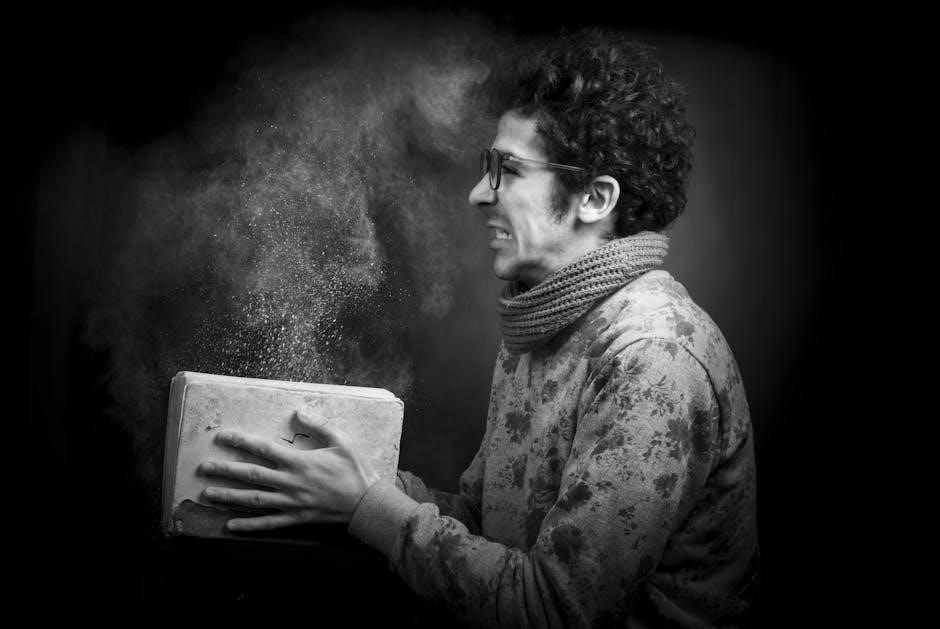The Characteristics of Effective Learning (CoEL) are a fundamental part of the Early Years Foundation Stage (EYFS), focusing on how children learn rather than what they learn. CoEL emphasizes curiosity, creativity, and critical thinking, providing a framework for practitioners to support children in becoming lifelong learners. It highlights the importance of play, exploration, and active engagement in shaping children’s learning processes. Understanding CoEL is essential for creating meaningful learning experiences that foster independence, resilience, and a love for learning in early childhood education.
Overview of CoEL in the Early Years Foundation Stage (EYFS)
The Characteristics of Effective Learning (CoEL) are a core component of the Early Years Foundation Stage (EYFS), shaping how children engage with their environment and experiences. CoEL focuses on the processes through which children learn, rather than the specific outcomes, emphasizing curiosity, creativity, and critical thinking. It is divided into three key characteristics: Playing and Exploring, Active Learning, and Creating and Thinking Critically. These characteristics guide practitioners in understanding and supporting children’s unique learning styles and developmental journeys. By embedding CoEL into daily practices, the EYFS ensures that children develop essential skills such as resilience, independence, and a lifelong love for learning. CoEL also complements the Prime and Specific Areas of Learning, creating a holistic approach to early childhood education.

The Three Key Characteristics of Effective Learning
CoEL consists of three key characteristics: Playing and Exploring, Active Learning, and Creating and Thinking Critically. These elements foster curiosity, resilience, and innovative thinking in children.
Playing and Exploring
Playing and exploring are fundamental to children’s learning. This characteristic encourages curiosity and engagement with the environment. Children demonstrate this by showing interest, investigating objects, and exploring ideas. They use their senses to discover the world, ask questions, and seek answers through play. Practitioners support this by providing open-ended resources and opportunities for children to investigate and learn at their own pace. This fosters a sense of wonder and a natural desire to learn, laying the foundation for lifelong exploration and discovery.
Active Learning
Active learning is about being fully engaged and motivated in the learning process. Children demonstrate this by showing perseverance, concentration, and a willingness to try new things. They are eager to participate, take risks, and explore challenges, even when faced with obstacles. Active learners maintain focus and show satisfaction in their achievements. This characteristic is crucial as it helps children develop resilience and a positive attitude toward learning. Practitioners encourage active learning by providing meaningful opportunities for children to engage deeply with activities, fostering their confidence and enthusiasm for discovery and growth.

Creating and Thinking Critically
Creating and thinking critically involves children generating ideas, making decisions, and solving problems. They explore possibilities, make connections between ideas, and learn to express their thoughts creatively. This characteristic encourages children to question, predict, and investigate, fostering independence and problem-solving skills. Critically, they begin to evaluate their own learning, reflecting on what works and what doesn’t. Through creative expression, such as art, music, or imaginative play, children communicate their ideas and develop a deeper understanding of the world. Practitioners support this by providing open-ended resources and opportunities for children to take risks and explore their creativity. This skill is vital for nurturing innovative thinking and preparing children for future challenges in learning and life. It emphasizes the importance of curiosity and confidence in shaping their unique perspectives.

The Role of the Learning Environment
The learning environment plays a crucial role in fostering effective learning. It should be inviting, stimulating, and well-organized, providing opportunities for exploration and creativity. A safe and inspiring space encourages children to engage actively with their surroundings, promoting curiosity and critical thinking.
How the Environment Fosters Effective Learning
The learning environment acts as a “third teacher,” providing a space where children can explore, discover, and engage actively with their surroundings. A well-designed environment fosters curiosity, creativity, and critical thinking by offering open-ended resources and opportunities for hands-on experiences. It encourages children to take risks, experiment, and learn from their mistakes. The environment should be organized to promote independence, allowing children to make choices and take ownership of their learning. Sensory-rich spaces, access to natural elements, and flexible areas for collaboration and reflection further enhance engagement and motivation. By creating an inspiring and safe space, the environment supports children in becoming active, agentic, and lifelong learners.
Importance of Outdoor Learning Opportunities
Outdoor learning opportunities play a vital role in fostering effective learning by providing children with diverse, hands-on experiences. The outdoor environment encourages exploration, creativity, and physical activity, which are essential for holistic development. Children can engage their senses, discover natural elements, and develop a sense of curiosity and wonder. Outdoor spaces also promote active learning, allowing children to take risks, problem-solve, and think critically in real-world contexts. Additionally, outdoor learning supports social interaction and collaboration, as children work together to navigate challenges like uneven terrain or changing weather. By connecting learning to nature and the wider world, outdoor opportunities enrich children’s understanding and inspire a lifelong love for exploration and discovery. This makes outdoor learning a powerful tool for nurturing the Characteristics of Effective Learning in early childhood education.
Assessment and Observation in CoEL
Practitioners observe children’s learning characteristics during play and daily activities to understand their unique approaches. These observations guide planning and support individual development effectively, fostering meaningful learning experiences.
Practitioners’ Role in Observing and Guiding Learning
Practitioners play a vital role in observing and guiding children’s learning by carefully monitoring their behaviors and interactions. They use these observations to identify individual learning styles and preferences, ensuring tailored support. By understanding how children engage with activities, practitioners can foster curiosity, creativity, and critical thinking. They create opportunities for children to explore, question, and problem-solve, aligning with the three key characteristics of effective learning. Regular documentation of these observations helps track progress and inform future planning. Practitioners also encourage active learning by modeling behaviors and providing feedback, helping children develop resilience and a growth mindset. Their role is essential in nurturing children’s natural desire to learn and preparing them for lifelong success.
Using the CoEL to Track Development
The Characteristics of Effective Learning (CoEL) provide a framework for tracking children’s developmental progress. By observing how children play, explore, and engage actively, practitioners can assess their learning behaviors and identify strengths and areas for support. CoEL helps practitioners understand how children approach challenges, express curiosity, and demonstrate creativity. This insight enables targeted interventions and personalized planning. Regular observations and documentation of these characteristics allow practitioners to monitor progress over time, ensuring children are developing the skills needed for lifelong learning. CoEL also supports the identification of individual learning styles, helping practitioners adapt their teaching strategies to meet the unique needs of each child. This continuous assessment process fosters a deeper understanding of how children learn and grow.

Connecting CoEL to Broader Learning Frameworks
CoEL links to the Prime and Specific Areas of Learning, providing a foundation for skills like communication, problem-solving, and creativity. This connection ensures a holistic approach to early childhood education, supporting seamless progression through developmental stages and curriculum frameworks.
Linking CoEL to Prime and Specific Areas of Learning
CoEL is intricately connected to both the Prime and Specific Areas of Learning, providing a foundational framework that supports children’s holistic development. The Prime Areas, which include Personal, Social and Emotional Development, Physical Development, and Communication and Language, are strengthened by CoEL as children develop essential life skills. For instance, curiosity and creativity fostered through CoEL enhance problem-solving abilities in math and exploration in literacy. Similarly, the Specific Areas, such as Mathematics, Literacy, and Understanding the World, benefit from CoEL as children apply critical thinking and active engagement to their learning. This integration ensures that children not only acquire knowledge but also develop the skills and attitudes necessary for lifelong learning, making CoEL a vital component of the EYFS curriculum. By nurturing these characteristics, educators create a supportive environment where children can flourish across all areas of development, building a robust foundation for future academic and personal success.